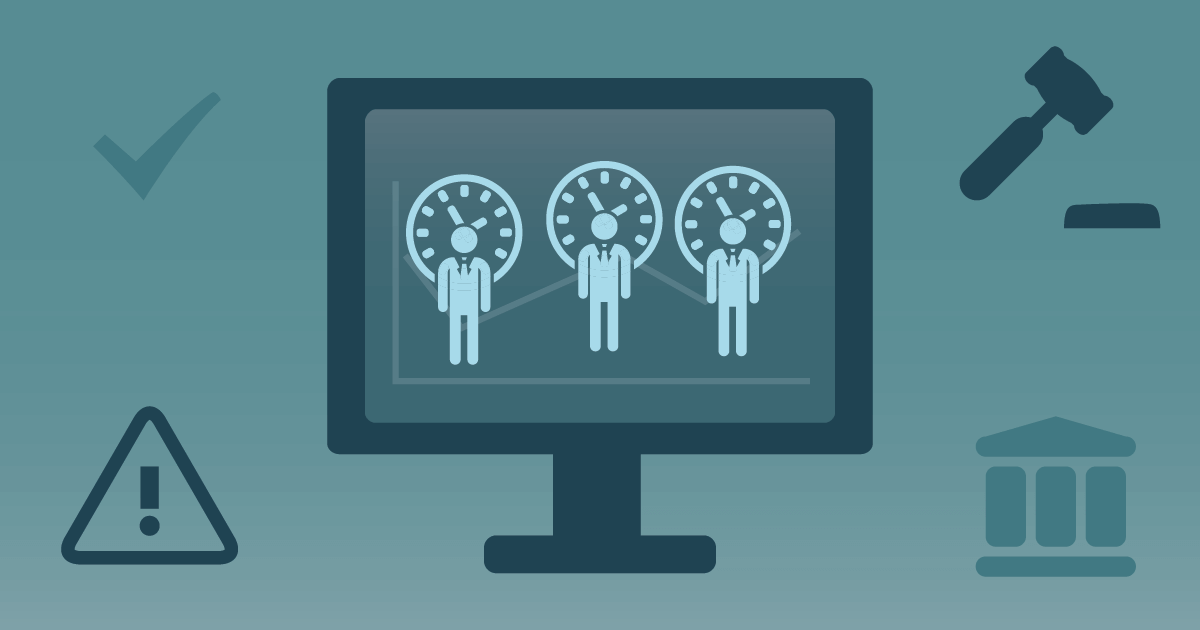If you’ve still got someone entering timesheet data by hand, 2017 is the year to automate your HR processes.
Once upon a time, businesses with 50-150 employees could manage benefits and payroll through a series of non-automated, disjointed programs. It was simpler to stay in compliance with state and federal regulations related to employment back then.
Well, those days are gone. The Affordable Care Act (ACA) and the Fair Labor Standards Act (FLSA) set out a complex series of rules for how businesses measure eligibility for benefits and what constitutes a full-time employee.
The good news is that 2017 promises to offer several HR software products to help small and middle market businesses stay compliant. Furthermore, if you get the right systems in place, it can be a “set it and forget it” situation.
Managing the complex
You heard a lot of talk about the FLSA in 2016. The new overtime regulation would have changed overtime eligibility for white collar, salaried workers earning less than $913 a week ($47,476 a year).
Even though a court temporarily halted implementation, time and attendance systems are always needed because you must track working hours and maintain accurate data on your employees. The latest software improves your ability to address this need, resulting in easier federal and state compliance.
Benefits administration is more complex, too
Further, in 2016, many businesses also struggled with the role that the ACA played in determining who is considered a full-time employee and the benefits to which they’re entitled. Now, the minimum value of those benefits and the cost of those benefits to employees must be evaluated and tracked.
It’s no longer easy to designate who is “full time” and “part time.” Depending on a variety of factors, part-time employees may work enough hours to become “full-time equivalents.”
It’s too complicated to “wing it” as you keep track of exempt and non-exempt, salaried and hourly employees, and who is eligible for overtime pay and various levels of benefits. Without automation, you could easily have one full-time person doing nothing but tracking and measuring who qualifies when for which benefits based on their full-time or part-time status.
Automation simplifies this process and allows managers to run reports to support planning and manage costs. For example, a report could provide information on whether it’s more affordable for your business to pay for higher benefits required by law, or pay the penalties for offering a lower level of benefits.
In addition to calculating who is eligible, systems can automatically identify “minimum essential coverage” and “minimum essential value” as well as provide insight into the affordability requirements laid out by the ACA.
Finally, integrated HR software should also help you gather the data you need to file government paperwork at the end of the year.
Integration, convenience and mobility are key
When choosing your new HR software, integration is key. You’ll want a time and attendance system that feeds data to your payroll and benefits systems because the new regulations mean hours worked over a certain period impact pay and benefits.
When you’re considering software that will be regularly used by your employees, it can be extremely beneficial to choose a program that offers a smartphone app. Since most people carry their phones everywhere, such apps make simple transactions easy, such as checking paid time off or official company holidays, looking up a recent pay stub, etc.
For the people who are responsible for the management and administration of your HR, find software backed by easily accessible technical support.
Another service to look for is software backed by a support website or call center.
Particularly if your company is big enough to be affected by the ACA and FLSA, but not yet big enough to need more HR staff, a support website can help answer questions your staff may have about COBRA, sick leave or payroll compliance.
Insperity is one of many companies that offer software to integrate and automate payroll, time and attendance, and benefits, as well as mobile apps backed by a call center for additional support.
Self-service still pays
Electronic benefits systems are a must to remain compliant, but these tools can also help streamline your HR department.
In the past few years, more and more companies have been moving to self-service benefits administration. This trend still holds since many smaller companies have yet to adopt HR software that allows employees to electronically enroll, make changes to their benefits or find out how much time off they have banked.
The benefits of employee self-service are many:
- It relieves the burden of HR employees keying in data.
- It improves accuracy since the people who know their data best, the employees, enter all details and can make changes as needed.
- Employees can check their pay stubs, tax information and PTO balances without involving their manager or HR representative.
- It improves the filing, monitoring and payment of expenses.
- It speeds up onboarding since new employees can complete employment documents online, before their first day.
Ideally, your new software package should keep you compliant, help you manage your workforce and give you the data you need to strategically plan for the future.
Learn more about how to effectively evaluate HR technology vendors and software. Download our free e-book, HR technology: How to choose the best platform for your business.


